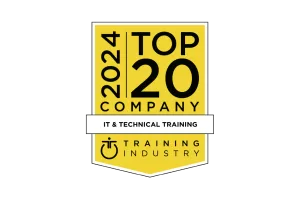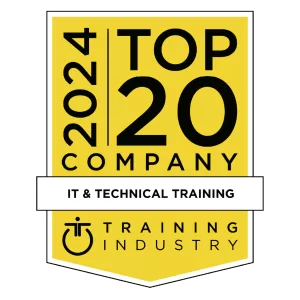Overview
This course is based on Red Hat Enterprise Application Platform 7.0. This course is a combination of Red Hat Application Development I: Programming in Java EE (AD183) and Red Hat Certified Enterprise Application Developer Exam (EX183).
In this course, you will learn about the various specifications that make up Java EE. Through hands-on labs, you will transform a simple Java SE command line application into a multi-tiered enterprise application using various Java EE specifications, including Enterprise Java Beans, Java Persistence API, Java Messaging Service, JAX-RS for REST services, Contexts and Dependency Injection (CDI), and JAAS for securing the application.
Skills Covered
- Generating multi-tiered Java EE applications.
- Packaging and deploying Java EE applications.
- Creating Enterprise Java Beans, including message-driven beans.
- Managing persistence.
- Creating REST services with JAX-RS.
- Implementing Contexts and Dependency Injection.
- Creating messaging applications with JMS.
- Securing Java EE applications with JAAS.
Who Should Attend
This course is designed for Java developers who want to learn more about the specifications that comprise the world of Java Enterprise Edition (Java EE).
Course Curriculum
Prerequisites
- Proficiency in developing Java SE applications, with 2+ years of experience required
- Proficiency in using an IDE such as Red Hat Developer Studio or Eclipse
- Experience with Maven is recommended but not required
Download Course Syllabus
Course Modules
- Describe Java EE features and distinguish between Java EE and Java SE applications.
- Describe the architecture of a Java EE application server, package an application, and deploy the application to an EAP server.
- Develop Enterprise Java Beans, including message-driven beans.Manage persistenceCreate persistence entities with validations.
- Define and manage JPA entity relationships.
- Create REST APIs using the JAX-RS specification.
- Describe typical use cases for using CDI and successfully implement it in an application.
- Create messaging clients that send and receive messages using the JMS API.
- Use JAAS to secure a Java EE application.
- Demonstrate proficiency of the knowledge and skills obtained during the course.
Request More Information
Training Options
- ILT: Instructor-Led Training
- VILT: Virtual Instructor-Led Training
RM5,168.00Enroll Now
RM5,168.00Enroll Now
RM5,168.00Enroll Now
RM5,168.00Enroll Now
RM5,168.00Enroll Now
RM5,168.00Enroll Now
RM5,168.00Enroll Now
RM5,168.00Enroll Now
RM5,168.00Enroll Now
RM5,168.00Enroll Now
RM5,168.00Enroll Now
RM5,168.00Enroll Now
RM5,168.00Enroll Now
RM5,168.00Enroll Now
RM5,168.00Enroll Now
RM5,168.00Enroll Now
Exam & Certification
Red Hat Certified Enterprise Application Developer Exam (EX183).
The Red Hat Certified Enterprise Application Developer exam (EX183) is designed for experienced JSE developers who wish to extend and test their knowledge and skills as applied to modern enterprise Java development. The test gauges your understanding of the core enterprise Java APIs that are required to implement modern, stateless business services.
Training & Certification Guide
The Red Hat® Certified Enterprise Application Developer exam (EX183) tests if you have a basic understanding of the core enterprise Java APIs that are required to implement modern, stateless business services.
The exam focuses on using the default behavior of the minimal set of JEE APIs that are applicable across all modern Enterprise Java application development environments:
- Using JAX-RS for simple REST create, read/search, update, and delete APIs.
- Using JAAS to secure access to services.
- Using stateless EJBs to provide business logic.
- Using CDI to integrate components.
- Using JMS to send and receive messages.
- Using Bean Validation to ensure data format and consistency.
- Using basic JPA to create, read, update, and delete persistent objects and their relationships.
By passing this exam, you become a Red Hat Certified Enterprise Application Developer. If you choose to continue your learning journey, this credential can also serve as a foundational step on your path toward our highest level of certification—Red Hat Certified Architect.
This exam is based on JBoss Enterprise Application Platform 7.
Using Red Hat JBoss EAP, you should be able to accomplish the tasks below without assistance. The tasks have been grouped into categories to assist your preparation.
- Bean validation
-
- Annotate a POJO to enable and set up data validation.
- Use the documentation to find useful standard validators.
- JPA mapping
-
- Annotate a POJO to map it to its persistent state representation in the database.
- Apply basic property mapping and be able to use the documentation to identify correct property annotations (e.g., @Temporal).
- Map a bidirectional OneToMany relationship between two entities, including both sides of the association.
- Understand default fetching behavior and be able to override the fetching strategy per association.
- JPA query
-
- Implement basic JPA queries using named parameters.
- Create and use a named query.
- Use a query to eager fetch an association.
- Messaging
-
- Understand point-to-point vs. publish/subscribe models.
- Understand JMS queues, topics, and connection factories.
- Understand and use the javax.jms.MessageListener interface.
- Implement a message-driven bean.
- Use the @MessageDriven and @ActivationConfigProperty annotations.
- REST services with JAX-RS
-
- Understand REST concepts, particularly the application and use of the HTTP PUT, DELETE, GET, and POST methods.
- Know and use standard HTTP return codes.
- Implement RESTful Root resource class.
- Expose a REST service using JAX-RS.
- Demonstrate ability to define @Path.
- Understand and use @Produce and @Consume.
- Be able to both consume and produce xml- and jso-formatted content using JAX-RS.
- Security
-
- Understand basic JAAS terms and concepts.
- Understand the JAAS authentication details that will be provided to you.
- Secure server-side services (REST services and EJBs) using JAAS annotations.
- CDI
-
- Understand contextual scopes.
As with all Red Hat performance-based exams, configurations must persist after reboot without intervention.
Red Hat encourages you to consider taking Red Hat Application Development I: Programming in Java EE (AD183) to help prepare for EX183. Attendance in these classes is not required; students can choose to take just the exam.
While attending Red Hat classes can be an important part of your preparation, attending class does not guarantee success on the exam. Previous experience, practice, and native aptitude are also important determinants of success.
Many books and other resources on system administration for Red Hat products are available. Red Hat does not endorse any of these materials as preparation guides for exams. Nevertheless, you may find additional reading helpful to deepen your understanding.
The EX183 exam is a hands-on, practical exam that requires you to undertake real-world development tasks. Internet access is not provided during the exam, and you will not be permitted to bring any hard copy or electronic documentation into the exam. This prohibition includes notes, books, or any other materials. Documentation that ships with JBoss EAP is available during the exam.
Frequently Asked Questions
Red Hat official training courses delivered by Trainocate Malaysia teaches you the fundamentals of each Red Hat technologies, with practical use cases and hands-on labs designed to help you use the products successfully. By certifying those skills, you prove what you know and can do and validate your knowledge to the market or an employer.
You can get further details—including requirements and objectives—about each offering by reviewing the individual descriptions within our full lists of courses and certifications.
An IT professional who becomes a Red Hat Certified System Administrator (RHCSA) is able to perform the core system administration skills required in Red Hat Enterprise Linux environments. The credential is earned after successfully passing the Red Hat Certified System Administrator (RHCSA) exam.
A Red Hat Certified Engineer (RHCE) is an RHCSA who is ready to automate Red Hat Enterprise Linux tasks, integrate Red Hat emerging technologies, and apply automation for efficiency and innovation. To learn more about how the credential is changing to match new needs and fill skills gaps, check out our frequently asked questions about the RHCE program.
Depending on the course or certification, we offer a number of learning styles for you. We conduct classroom, virtual, and on-site training, along with video classroom and online learning formats. Learn more about all the ways to train that Red Hat offers.
Performance-based testing is testing by doing—that is, by having you perform real-world tasks similar to those you must perform in a job role. All Red Hat certification exams are performance-based tests, giving you the hands-on, practical application you need to demonstrate your skills.
Purchasing a bundle that includes an individual course and exam offers a price savings over purchasing the course and exam separately. Just as importantly, however, a bundle allows you to extend the value of an individual course by both testing and validating the skills you’ve learned in the course through hands-on, practical exams.
Organizations hiring employees, contractors, and consultants can look to Red Hat certifications as an input into hiring, assignment, promotion, and other management decisions. Similarly, individuals who earn these certifications benefit and see value by having official, impartial, and proven validation of their skills and knowledge.
For either an individual or a team, you can assess skills and get course recommendations based on role, skills gaps, or the product you’re interested in.






